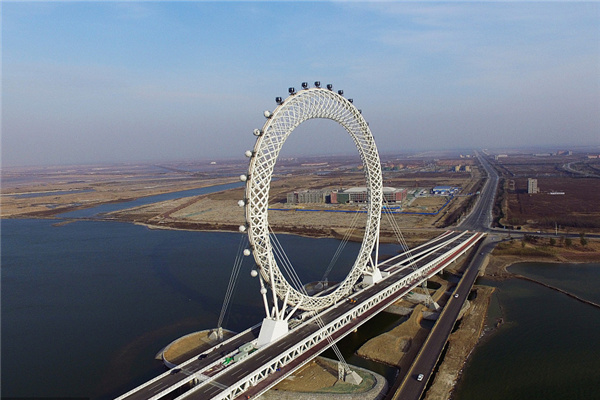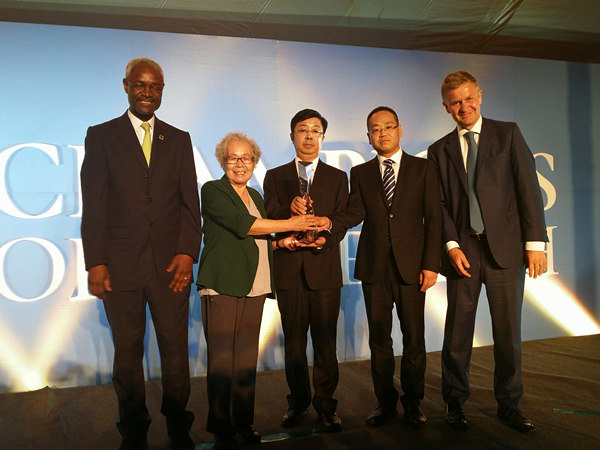

China is on everyone's mind these days. The Beijing Olympics has brought unprecedented and deserved attention to the nation. One consistent theme is China's environmental management-from the air quality in Beijing to the rapid growth in greenhouse gas emissions. What is not often understood outside China is just how serious the government is about environmental protection and what has been done so far.

Frequently, the topic of climate change causes us to think of abstract threats studied by our best scientists and debated by international negotiators that are far away from our everyday lives. Rather than a distant problem, I think that climate change should be a prod to us to get our house in order. I think that there are four practical areas we can focus action now while the technical experts puzzle out the grand international scheme for cooperation. These are:
Coordination between levels of government
Understanding climate change linkages
Outreach to all sectors of the economy, and
Empowerment through markets.
Each of these, I believe, is a necessary next step to build upon the excellent foundation that has been laid by the central government on the topic of climate change.
One problem that has been highlighted by the government's drive to hit the 11th Five-Year Plan (2006-11) goals to reduce SO2 emissions and energy is the need for tighter coordination between national and provincial goals and objectives. How can we make national priorities, provincial priorities?
There have been many concrete suggestions for reform, but most have focused on increasing accountability. Sticks are important, but we should also consider the power of carrots. For example, the central government could rely more heavily on incentives to guide local and provincial priorities. Training and demonstration programs have long been a feature of policy experimentation in China, but this has most often been ad hoc and informally organized. Creating a permanent competitive grants program with specific application criteria and tied funding would institutionalize concrete financial support for national priorities and encourage the stream of innovations needed if we are to succeed in limiting climate change.
Offering carrots is one way to get attention, but we also need a better understanding of the linkages between climate change and local conditions if it is to become any kind of priority.
At present in China, I do not think we have a clear picture of what the future might bring. What does a major city like Beijing look like under a changed climate? What are the new stresses and feedbacks both negative and positive? While local officials are wrestling with controlling air pollution now, how will climate change affect these efforts? Will a hotter world mean more energy use and more emissions? Case studies are an especially powerful tool for highlighting linkages, deriving lessons, and informing policy making.
Institutional innovation is fundamental, but there is a need for better outreach to the business sector since this is where innovation in products and production practically occurs.
The government's 11th Five-Year Plan has ambitiously and sensibly focused on improving the energy intensity of the economy. Practically, the government has focused its attention on the 1,000 largest enterprises, however. The small and medium enterprises contribute more than 30 percent to the nation's gross domestic product. For example, the China Association of Small and Medium Enterprises has over 70,000 members. Unfortunately, they lack the capacities of their larger corporate brethren and yet, this scale of enterprise which grows most rapidly may be the most fertile ground for a focus on energy efficiency.
Getting business engaged is key, but there is a need to create broader-based incentive programs. Our challenge is empowering and harnessing China's vast entrepreneurial talent in identifying, testing, and deploying greenhouse gas reduction strategies. It is clear that there is an emerging global consensus that perhaps the most powerful way to do this is through the market.
Encouraging a voluntary program of emissions reduction commitments by companies can create a transformative experience. For example, coupling commitments with emissions trading can link broad national goals such as poverty alleviation with climate change. China has enormous capacity to improve agricultural productivity while avoiding or sequestering GHGs. These reductions can also deliver increased revenues to local people under the right policy environment.
I have seen the phenomenal energy and creativity of local people in China. It is our most valuable resource in tackling this critical global problem. Let's show the world that China is as intent on contributing to solving climate change as it is to meeting global demand for products.
The author is chief economist of the Environmental Defense Fund, a US-based non-governmental organization. He can be reached via DDudek@environmentaldefense.org. The views expressed in the article are his own.
(China Daily 09/22/2008 page4)













